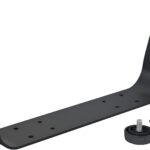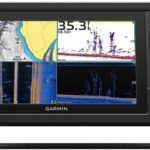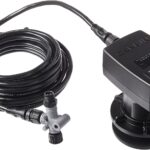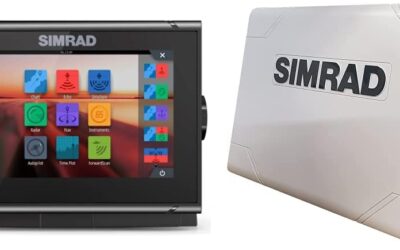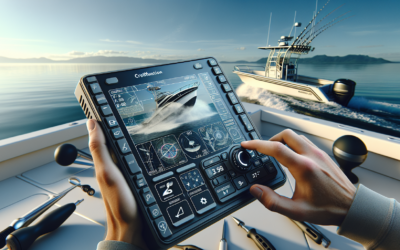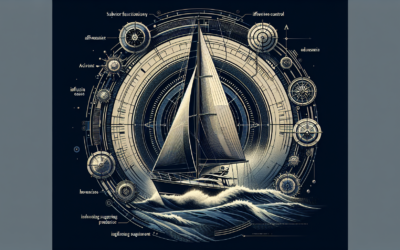Imagine being able to enjoy your favorite pastime of fishing while also helping to protect the environment. With the innovative product, “Eco-friendly Fishing With Fish Finders: Features Promoting Sustainable Practices,” you can do just that. This groundbreaking technology not only enhances your fishing experience but also encourages sustainable fishing practices. Say goodbye to harmful fishing practices and say hello to a more eco-conscious way of enjoying your time on the water.
1. Understanding the Concept of Eco-friendly Fishing
1.1 Definition of Eco-friendly Fishing
Eco-friendly fishing, also known as sustainable fishing, refers to fishing practices that are designed to minimize harm to the environment and promote long-term conservation of fish populations. It involves using fishing methods and equipment that have a minimal impact on marine ecosystems, while also ensuring the sustainable harvesting of fish.
1.2 Importance of Sustainable Fishing Practices
Sustainable fishing practices are crucial for maintaining the health and balance of marine ecosystems. Overfishing and destructive fishing methods have led to the decline of fish populations, disrupted marine habitats, and harmed biodiversity. By adopting eco-friendly fishing practices, we can protect fish stocks, preserve fragile ecosystems, and support the livelihoods of fishing communities.
2. Introduction to Fish Finders
2.1 Definition and Functionality of Fish Finders
Fish finders are electronic devices that use sonar technology to locate fish underwater. They work by emitting sound waves into the water and then detecting the echoes that bounce back from objects, including fish. This information is then displayed on a screen, allowing anglers to identify the presence and location of fish.
2.2 Advantages of Using Fish Finders in Fishing
Using fish finders has numerous advantages for anglers. They provide real-time information about the presence and behavior of fish, enabling more productive fishing trips. Fish finders also allow anglers to navigate more effectively, as they can identify underwater structures, such as reefs or drop-offs, that attract fish. Overall, fish finders enhance fishing efficiency and increase the chances of successful catches.
3. Key Features of Eco-friendly Fish Finders
3.1 GPS Integration for Responsible Navigation
GPS integration is a key feature of eco-friendly fish finders. By combining sonar technology with GPS (Global Positioning System), anglers can navigate responsibly and avoid areas with sensitive habitats or marine protected areas. GPS integration allows for precise tracking of the boat’s location, helping anglers stay within legal fishing boundaries and minimizing the risk of damaging fragile marine ecosystems.
3.2 Sonar Technology for Targeted Fishing
Sonar technology is the core feature of fish finders and plays a vital role in eco-friendly fishing. By using sonar, anglers can locate fish more accurately, reducing the need for extensive searching or repetitive casts. This targeted fishing approach minimizes unnecessary disturbance to the environment, reduces bycatch, and increases the efficiency of the fishing process.
3.3 Water Temperature Sensors for Conservation
Eco-friendly fish finders often incorporate water temperature sensors. These sensors provide anglers with valuable information about the water temperature at different depths. By understanding the temperature preferences of different fish species, anglers can target their fishing efforts more effectively. This knowledge helps reduce the risk of overfishing and ensures the conservation of fish populations by avoiding fishing in areas with unsuitable temperatures.
3.4 Depth Indicators for Reducing Bycatch
Another important feature of eco-friendly fish finders is depth indicators. These indicators allow anglers to determine the depth at which fish are located. By knowing the precise depth, anglers can adjust their fishing techniques accordingly, reducing the chances of unintentionally catching non-targeted or undersized fish. This helps minimize bycatch, a significant environmental concern in fishing, and enhances the sustainability of fishing practices.
3.5 Wireless Transducers for Minimal Disturbance
Wireless transducers are a newer technological advancement in eco-friendly fish finders. These transducers use Bluetooth or Wi-Fi connectivity to transmit sonar signals from the fish finder to a mobile or portable device, such as a smartphone or tablet. By eliminating the need for traditional transducer cables, wireless transducers reduce the physical impact on the boat and minimize the disturbance caused by fishing equipment in the water.
4. GPS Integration for Responsible Navigation
4.1 GPS Features in Eco-friendly Fish Finders
Eco-friendly fish finders with GPS integration offer a range of features that promote responsible navigation. They provide accurate positioning data, allowing anglers to mark their favorite fishing spots and navigate back to them easily. Additionally, some fish finders have preloaded maps that display important information, such as marine protected areas or no-fishing zones, enabling anglers to avoid these sensitive areas and comply with regulations.
4.2 Benefits of GPS Integration for Sustainable Fishing
The integration of GPS technology in fish finders has significant benefits for sustainable fishing practices. By guiding anglers to the right fishing spots, fish finders with GPS integration help reduce unnecessary fuel consumption and minimize the carbon footprint of fishing vessels. They also enable anglers to navigate more efficiently, ensuring they stay within legal fishing boundaries and avoid damaging critical habitats, such as coral reefs or seagrass beds.
5. Sonar Technology for Targeted Fishing
5.1 Sonar Features in Eco-friendly Fish Finders
Sonar technology is the primary feature of fish finders and has several features that enhance targeted fishing and reduce environmental impact. Fish finders with advanced sonar capabilities provide anglers with detailed information about fish location, size, and depth. Some models even have the ability to differentiate between different fish species, allowing anglers to selectively target specific fish populations. This precision helps minimize the unintentional capture of non-targeted or undersized fish, reducing waste and environmental harm.
5.2 Advantages of Sonar Technology for Conservation
The use of sonar technology in eco-friendly fish finders promotes conservation in several ways. By accurately locating fish, anglers can reduce the time spent searching for fish, minimizing fuel consumption and lowering the carbon footprint of fishing trips. Sonar technology also allows anglers to avoid areas with lower fish densities, reducing the risk of overfishing and helping maintain healthy fish populations. By enabling targeted fishing, sonar technology enhances the sustainability and efficiency of fishing operations.
6. Water Temperature Sensors for Conservation
6.1 Water Temperature Sensors in Eco-friendly Fish Finders
Water temperature sensors are a valuable component of eco-friendly fish finders. These sensors measure the temperature of the water at different depths, providing anglers with important information about the thermal preferences of different fish species. By understanding the preferred temperature ranges of target species, anglers can adjust their fishing strategies to target fish in areas with suitable temperature conditions, reducing the risk of catching fish in unsuitable environments.
6.2 Significance of Water Temperature Sensors in Sustainable Fishing
Water temperature sensors play a significant role in promoting sustainable fishing practices. By avoiding fishing in areas with unfavorable temperatures, anglers can help protect fish populations from unnecessary stress or mortality. This ensures the long-term viability of fish stocks and contributes to the overall health and balance of marine ecosystems. Water temperature sensors allow anglers to make informed decisions that prioritize the welfare of fish and maintain the sustainability of their fishing operations.
7. Depth Indicators for Reducing Bycatch
7.1 Depth Indicator Features in Eco-friendly Fish Finders
Eco-friendly fish finders equipped with depth indicators provide anglers with accurate information about the depth at which fish are located. Depth indicators use sonar technology to measure the distance between the water’s surface and the seabed, allowing anglers to determine the precise depth at which fish are swimming. This information helps anglers adjust their fishing techniques, such as using the appropriate bait or selecting the right fishing gear, to target specific fish species and reduce the unintentional capture of non-targeted or undersized fish.
7.2 Role of Depth Indicators in Bycatch Reduction
Bycatch, the unintentional capture of non-targeted species or undersized fish, is a significant concern in fishing. Eco-friendly fish finders equipped with depth indicators play a crucial role in reducing bycatch. By providing accurate depth information, anglers can avoid fishing at depths where non-targeted species may be present. This targeted fishing approach minimizes waste, reduces the impact on non-targeted species, and contributes to the sustainability of fishing practices by ensuring the responsible harvesting of target species.
8. Wireless Transducers for Minimal Disturbance
8.1 Wireless Transducer Technology in Eco-friendly Fish Finders
Wireless transducers are a technological advancement in eco-friendly fish finders that significantly reduce disturbance in the marine environment. Traditional fish finders require transducer cables, which can create physical obstructions and increase the risk of entanglement with marine life. Wireless transducers eliminate the need for cables by utilizing Bluetooth or Wi-Fi connectivity to transmit sonar signals to a mobile or portable device. This wireless technology minimizes the disturbance caused by fishing equipment in the water, allowing for a more environmentally friendly fishing experience.
8.2 Benefits of Wireless Transducers for Environmental Impact Reduction
The adoption of wireless transducers in eco-friendly fish finders offers several benefits for the reduction of environmental impact. By removing the physical obstructions created by traditional transducer cables, wireless transducers minimize the risk of entanglement with marine life, reducing harm to underwater ecosystems. Additionally, wireless transducers reduce the overall amount of fishing gear in the water, mitigating potential damage to sensitive habitats. The use of wireless transducers promotes a more sustainable and environmentally conscious fishing experience.
9. Additional Sustainability Features in Fish Finders
9.1 Weather Condition Indicators for Responsible Fishing
Some eco-friendly fish finders are equipped with weather condition indicators, which provide real-time information about weather patterns and conditions. This feature allows anglers to make informed decisions regarding their fishing trips. By being aware of adverse weather conditions, such as storms or high winds, anglers can prioritize their safety and avoid unnecessary risks. This responsible approach to fishing contributes to sustainable practices by ensuring the well-being of anglers and preventing accidents or damage to fishing equipment.
9.2 Bottom Composition Mapping for Habitat Conservation
Eco-friendly fish finders with bottom composition mapping capabilities provide anglers with detailed information about the nature and characteristics of the seabed. By understanding the composition of the underwater environment, anglers can identify and avoid sensitive habitats, such as coral reefs or seagrass beds. This knowledge helps protect fragile ecosystems, prevents damage to critical habitats, and supports habitat conservation efforts. Bottom composition mapping enhances the environmental sustainability of fishing practices by guiding anglers to areas where their impact is minimized.
9.3 Battery Efficiency for Reduced Carbon Footprint
Battery efficiency is an important sustainability feature in eco-friendly fish finders. By optimizing the power consumption of the device, fish finders with enhanced battery efficiency reduce the need for frequent battery replacements and minimize waste. Additionally, improved battery efficiency helps reduce the carbon footprint of fishing trips, as less energy is consumed during fishing operations. By prioritizing battery efficiency, anglers can actively contribute to reducing their environmental impact and promote sustainable fishing practices.
10. Conclusion
10.1 Embracing Eco-friendly Fishing with Fish Finders
Eco-friendly fishing practices are essential for the long-term health and sustainability of our marine ecosystems. Fish finders, with their advanced features and technologies, provide valuable tools for anglers to engage in eco-friendly fishing. The integration of GPS technology enables responsible navigation, ensuring that fishing activities are conducted within legal boundaries and avoid damaging sensitive habitats. Sonar technology allows for targeted fishing, reducing bycatch and increasing fishing efficiency. Water temperature sensors and depth indicators further enhance sustainable fishing practices by enabling anglers to make informed decisions that prioritize conservation. The use of wireless transducers minimizes disturbance in marine environments, while additional features such as weather condition indicators and bottom composition mapping promote responsible fishing practices.
10.2 Importance of Continued Innovation in Sustainable Fishing Technologies
As our understanding of marine ecosystems and sustainable fishing practices continues to evolve, it is crucial to embrace continued innovation in fishing technologies. By investing in research and development, manufacturers can further improve the eco-friendliness of fish finders and other fishing equipment. Ongoing innovation will enable anglers to have even more precise control over their fishing practices, enhancing their ability to conserve fish populations, protect marine habitats, and reduce their environmental footprint. Continued innovation is vital for fostering a future where eco-friendly fishing becomes the norm, ensuring the sustainability of our oceans for generations to come.

